Visions of future experiences that we encounter through media are often focused on technological developments and its positive influences on moments of our lives. What are the experiential values behind these narratives, and how do these futures take account of urban experiences on various scales - from people, neighborhoods, communities, and cities? In this proposal, we’d like to highlight our ‘perspectives’ on envisioning future experiences, and share the value-centric design method we have utilized to reflect on current experiences and to envision four possible futures.
The city as a ‘lived city’ is formed by experiences and interrelationships of the people that occupy the space at the moment in time. COVID19 pandemic has brought us to the ‘New Normal’ - where the public have entered the private spaces, and physical and social experiences have moved into digital space. How did the current pandemic situation influence people’s perception and behavior with respect to interactions with others, spaces, and activities? What experiential values can we observe from the collective pandemic situation, and how might we leverage these values to envision our post-COVID futures for better neighborhoods?
The starting point of this project is in the collection of stories and experiences of people from around the world, with a focus on their changing perceptions towards others, spaces, and activities. As our perception of the environment is related to the reinterpretation of gathered data, especially in the way we store, organize, forget and recall this knowledge, we found that it would be important to use emotion keywords to trigger memory. We used a set of emotion keywords that are relevant to the pandemic experience (e.g., ‘solidarity’, ‘nostalgic’, and ‘mistrusted’) to help individuals to cognitively recognize and verbalize their own emotions, guiding them to pick up on situations, actions, and environments that prompted these emotions. Synthesized insights and visual mapping of this data (circle diagram) provided guidance to clustering of emerging technologies, which led us to the development of four possible future visions. Each one focuses on various scales of the urban environment - interpersonal, neighborhood, city, and the digital space.
The future consists not of one inevitable future to be predicted, but rather of multiple possible futures determined by our present world. This project proposes four possible visions of the post-COVID futures, exploring the impact of distributed social-public experiences and immersive technologies in our cities. Each design vision is driven by experiential values identified from the study of emotional pandemic stories across the globe, and informed by socio-technical trends and signals from the current days. These are not predictions, and these are only four of many possible futures we can imagine. Through this, we’d like to invite the public to reflect on the experiences they value most, and how it can be embedded and manifested in future (speculative) visions. A good neighborhood is a collection of meaningful experiences.
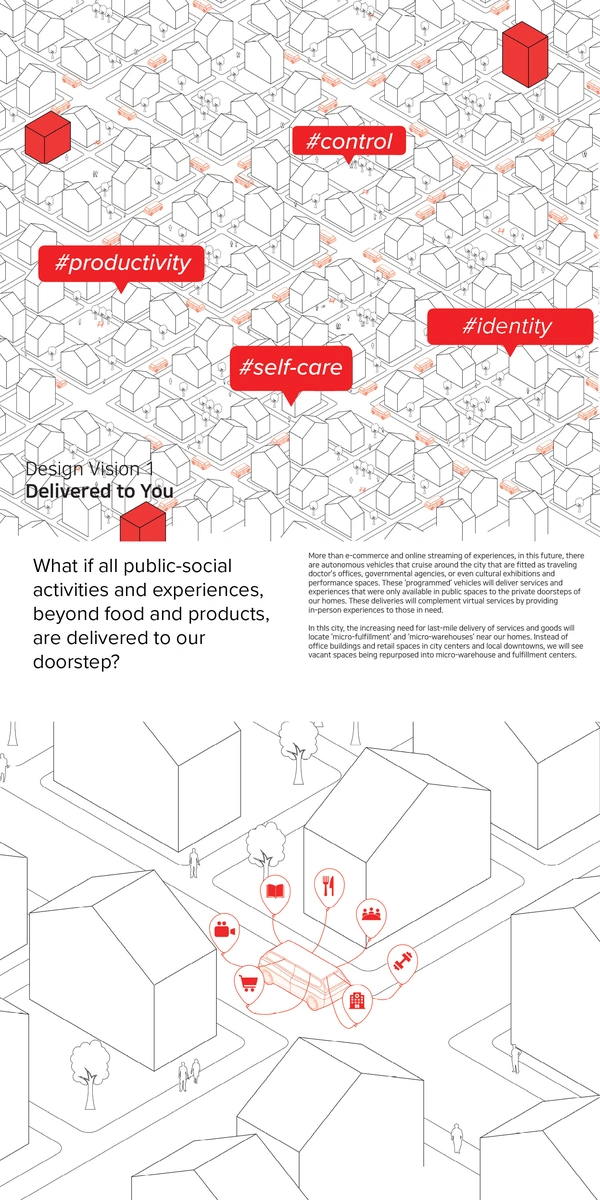
Constant movement of autonomous delivery systems will occupy our streets. A busy network of autonomous cars and drones will deliver products, services, and experiences to our homes. This extensive network of delivery systems and demand for at-home experiences will further accelerate decentralization of public and social activities. This increase in demand for at-home experiences will redefine the role of the ‘downtown’ district, or the ‘high street’ where we used to go enjoy local shops.
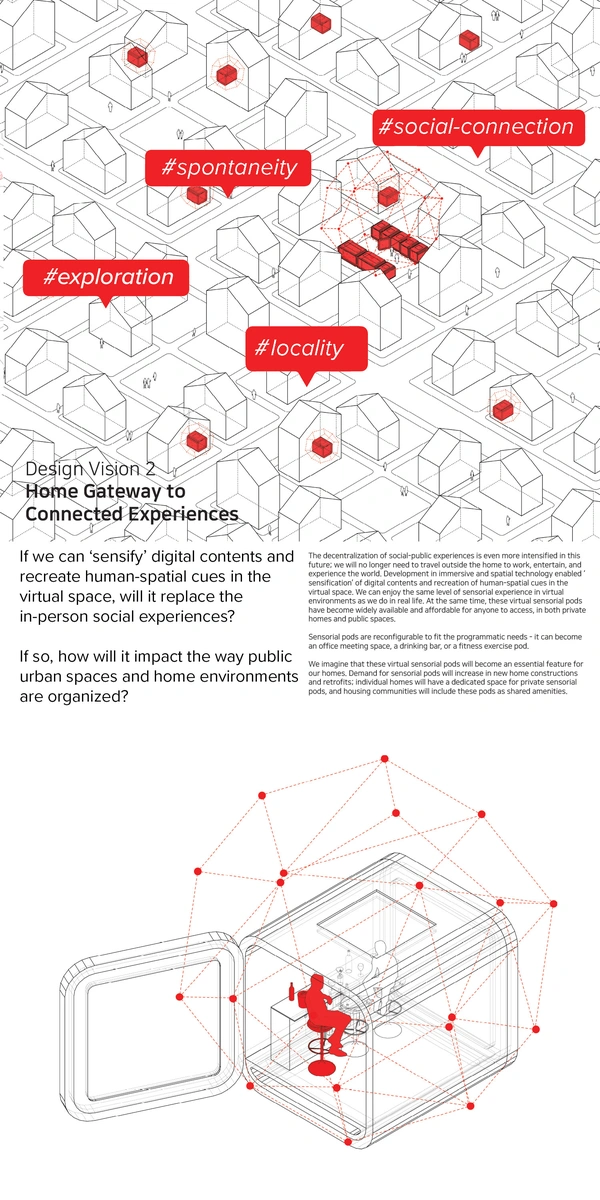
We imagine a future where virtual sensorial pods are affordable and widely available throughout private homes and public spaces. Interior of the pods can be designed to fit the programmatic needs - it can become an office meeting space, a drinking bar, or a fitness pod. It may also become a desired feature to be shared within gated communities (like the community gym or pool). The pods become a gateway to connect with others in immersive ways.
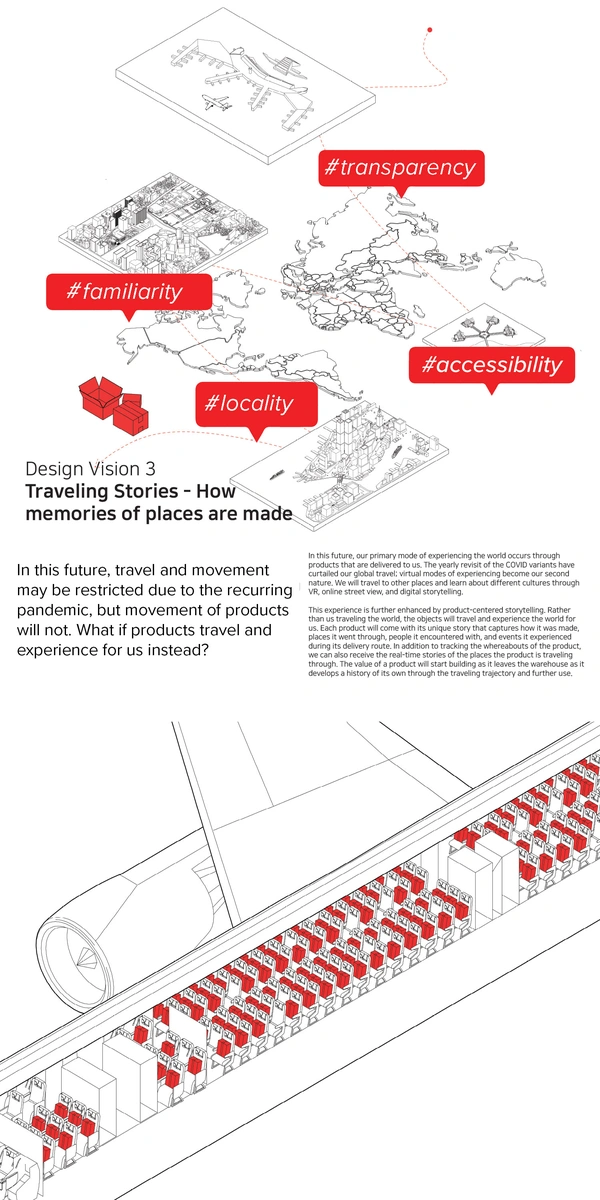
We can travel to other places through VR, online street view, and other modes of virtual storytelling. This experience can be further supplemented by product-centered storytelling. We imagine a future where the primary mode of accessing new stories and experiences are through products that are delivered to us. Each product will come with its unique story that captures how it was made, places it went through, people it encountered with, and events it experienced during its delivery route.
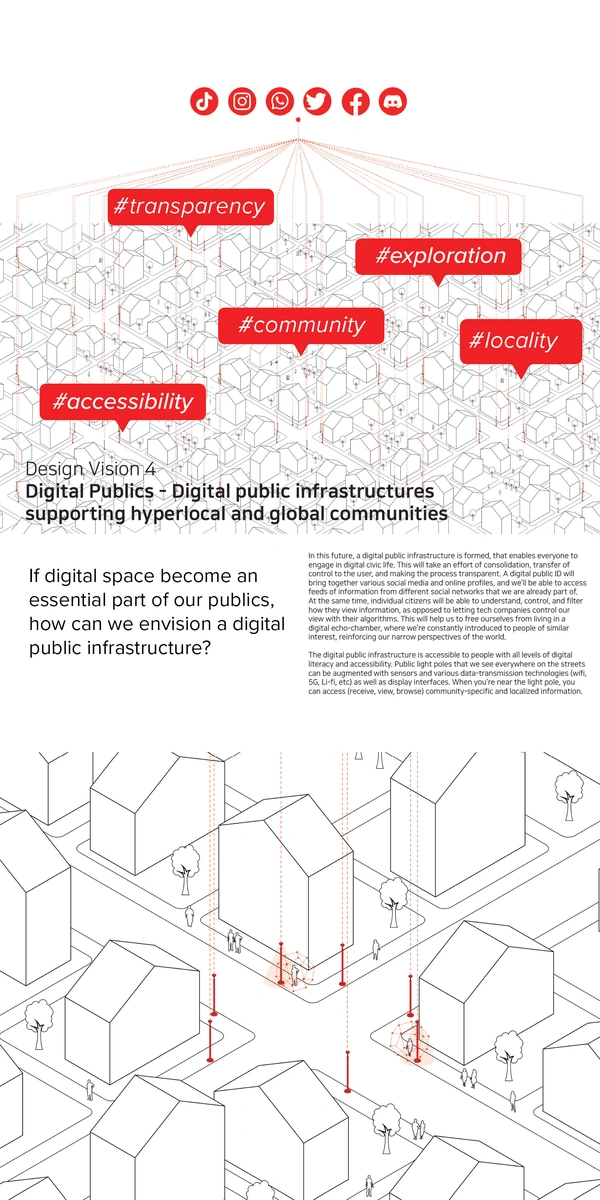
A digital public infrastructure is formed that lets everyone engage in public and civic life in digital spaces. This can start with aggregating feeds of information from different social networks, but giving the user the control of how they can view and filter information. Through this we can read and discuss relevant issues of our community, but also participate in governance of online and physical spaces with all levels of digital literacy and accessibility.
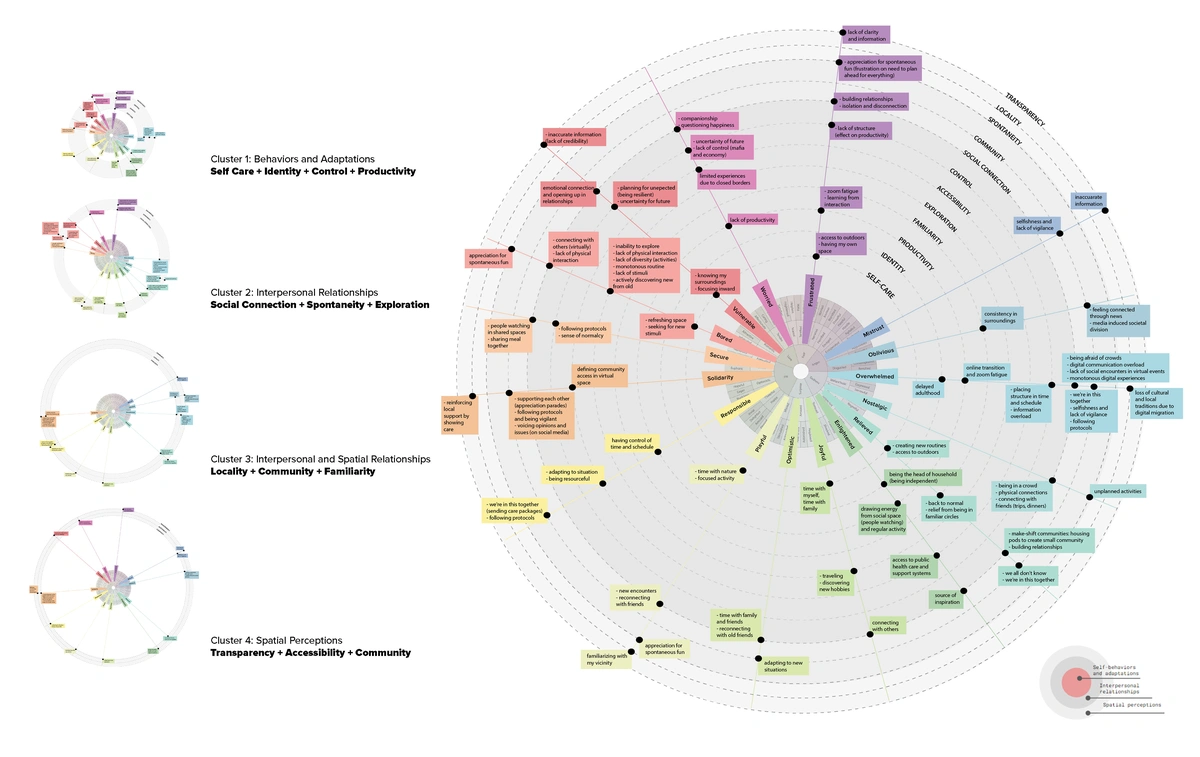
The starting point of this project is in the collection of stories and experiences of people from around the world, with a focus on their changing perceptions towards others, spaces, and activities due to COVID19 restrictions. Findings from the design research were mapped onto this circular emotion-value diagram, where selected emotions are placed in the center, and related persona, inter-personal, and community experiences are mapped on the concentric rings of value-experiences.
D.FLUENCE is an experience design practice founded by Yihyun Lim and Bumjin Kim, around a vision of searching for ways to improve our everyday lives through design. We search for design opportunities by studying current societal issues and emerging trends, and envision future experiences through design and prototyping. Yihyun and Bumjin met at MIT while pursuing their M.Arch degrees and have individually pursued their careers as researcher, architect, and designer, before deciding to team up to continue explore the impact of design. Their work has been presented at international design exhibitions and venues such as Milan Design Week, Chicago Architecture Biennial, and Ars Electronica.
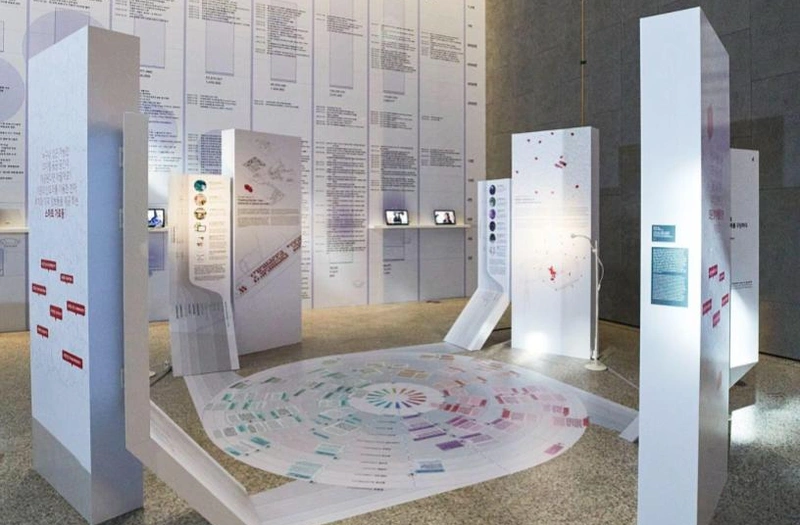
Exhibition picture: 《What is To be Asked - Architecture and Urbanism beyond COVID-19>> at Seoul Hall of Architecture and Urbanism. Four future nodes are arranged in a circle around a diagram of concentric circles on the floor. Each of the four future nodes comprises two different-sized totems, showing not only signals and trends with emerging technologies but also drawings of how we envision the future.
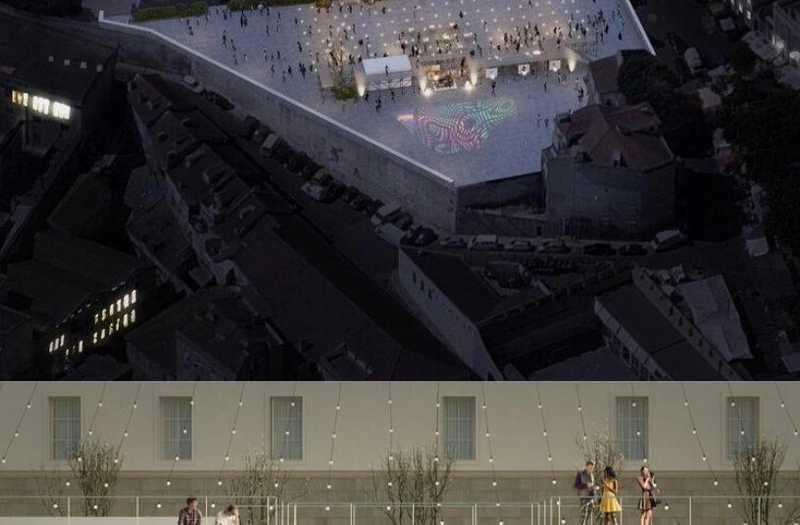
Urban Platform is to capture the experience with minimal interference to its surroundings, Urban Platform used scaffolding-like structure to be appropriated by people for various programmatic uses, and at the same time to blend itself into the scenes of the city by not obstructing the view. The structure composed of five different modules, Steps, Stage, Void, Enclosed space, and Miradouro.
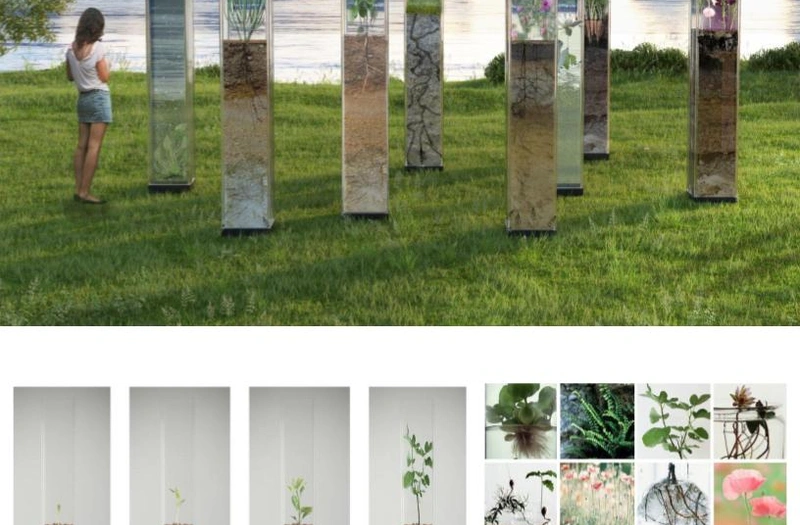
«Worlds Unseen» is intended to be a revelation. Of many things, but at its most basic level, it will reveal the beautiful elements of nature that normally escape our eyes. This uses transparent columns as ethereal pedestals to showcase all the natural beauty that normally escapes our eyes, both above and below the surface.
Time is an element in this installation, as seeds are planted in each columns, and over the course of three months, visitors can witness the growth of various plant lives.
